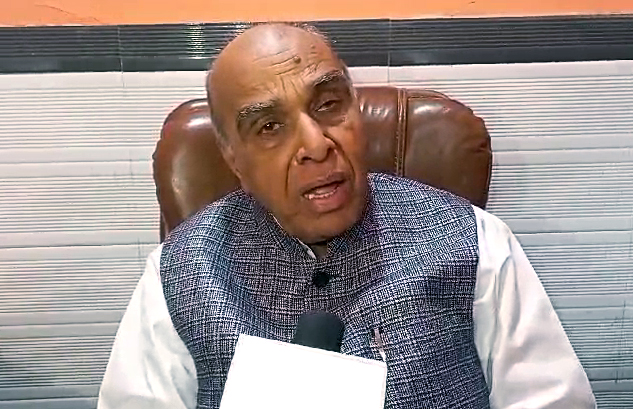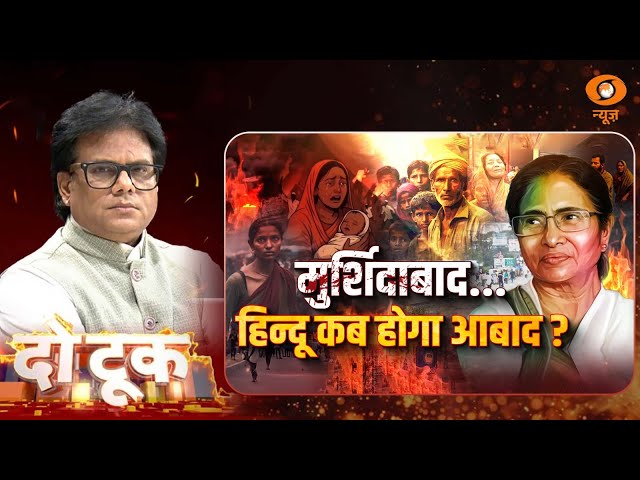Maharashtra was once a Congress bastion. Now, the BJP is the dominant political party there, maintaining its lead election after election and scripting a clear narrative in a state that had become riddled with fractured electoral numbers since 1990.
In Maharashtra, no political party had touched the 100-seat threshold in the 288-member assembly since the 1990 polls. The BJP made history in 2014 when it won 122 seats and maintained its lead in upcoming elections. The party won over 100 seats in 2019 and solidified its central position in state politics in 2024, showing its strongest performance so far, with a strike rate touching 90%. The party won 132 out of 149 seats it contested.
The 2024 state election results show people’s trust in the BJP-led alliance’s vision for the state’s future and its governance model. Leading the Mahayuti alliance, the BJP faced off against the Maha Vikas Aghadi (MVA)a, coalition comprising the Shiv Sena (Uddhav Balasaheb Thackeray faction – SHSUBT), the Nationalist Congress Party (led by Sharad Pawar) (NCP – NCPSP), and the Congress (INC).
The outcome was a clear and massive victory for the BJP-led Mahayuti and can be seen as a shift towards stability and development after the political crises seen in the state over the last five years, with vertical splits in two of its major political parties, the Shiv Sena and the NCP.
The two splits meant the state now had five major political parties with overlapping geographical spheres of influence between different Shiv Sena and NCP factions. That implied the possibility of increased political instability in the state. The election outcome appears settled to address that for the next five years.
The spectacular win registered by the BJP is a testament to the party’s organisational strength, strategic planning, and commitment to the people of Maharashtra. Its allies, the Shiv Sena and the NCP, have also delivered strong performances, winning 57 and 41 seats, respectively.
On the other hand, the Congress, which once dominated Maharashtra’s politics, managed to secure just 16 of the 101 seats it contested, highlighting its declining electoral appeal. The party that has ruled Maharashtra for decades, either directly or in alliances, was reduced to a poor strike rate of 16% this time. Its alliance partner Shiv Sena (UBT) won just 20 seats, while the NCP (SP) was reduced to 10 seats, a significant decline from the 2019 and previous assembly poll results in the state.
Journey to the Electoral Shift
Maharashtra’s political journey began on May 1, 1960, when Bombay State was split into Maharashtra and Gujarat. The outgoing state electorally had 396 assembly seats, which were divided between Maharashtra, with 264 constituencies, and Gujarat, with 132 constituencies. Subsequently, the assembly constituencies were raised to 288 with census data and district modifications.
For decades, the Congress party held sway over Maharashtra, winning election after election from 1951-52 until 1978. However, things began to change in 1978 when Sharad Pawar, then just 38 years old, left the Congress to form the Congress (Socialist) party, marking the beginning of Maharashtra’s coalition era.
The 1978 assembly elections saw the Congress party split into Congress (Indira) and Congress (Devraj Urs). The Janata Party won 99 seats, Congress (Urs) secured 69, and Congress (Indira) won 62 seats. A coalition government was formed, led by Vasantdada Patil, with the support of Congress (Urs) and Congress (Indira), but it was short-lived. It was replaced by Sharad Pawar, who joined hands with the Janata Party and eventually became the youngest Maharashtra CM.
In 1980, the Indira Gandhi-led Union government dismissed Sharad Pawar’s government, and Congress returned to power with the new state election results. The party continued its dominance, winning the 1985 assembly elections and emerging as the largest party in the 1990 elections, securing 141 of the 288 seats. However, the political landscape of Maharashtra was gradually changing.
The 1995 assembly elections marked a turning point, as the Shiv Sena-BJP coalition ended Congress’s long-standing electoral hold. The Shiv Sena won 73 seats with BJP’s 65 seats. Manohar Joshi of Shiv Sena took over as the CM. In February 1999, the Shiv Sena replaced Manohar Joshi with Narayan Rane.
The 1999 elections witnessed a three-way contest between Shiv Sena-BJP, Congress, and NCP. The Shiv Sena won 69 seats, the BJP got 56, the Congress had 75 seats, and the NCP had 58 seats. After the election, the Congress and the NCP allied to form the government. The coalition continued to rule Maharashtra till 2014, registering victories in the 2004 and 2009 assembly elections.
However, the tide began to turn in 2014.
Historically, Shiv Sena had been the senior partner in Maharashtra politics, but as the BJP’s influence grew, the dynamics shifted, leading to tensions. When numbers were with the Shiv Sena, the BJP respected that, but when it came to the BJP’s electoral dominance in the state, the Shiv Sena refused to take a similar line. In 2014, the Shiv Sena broke away from the BJP, only to return after the BJP formed the government with outside support from the NCP. It was the year that marked the BJP’s rising dominance in Maharashtra politics, making it the single largest party with seat counts twice as large as other political parties.
In 2019, both parties fought the Lok Sabha and assembly elections together, but disputes over the chief ministerial post led to a split. In a surprising move, the Shiv Sena allied with the Congress and the NCP, forming the MVA government, with Uddhav Thackeray as the CM.
Uddhav Thackeray’s decision didn’t sit well with many of the Shiv Sena leaders who found their ideologies close to the BJP. In June 2022, a Shiv Sena faction led by Eknath Shinde broke away from the Uddhav Thackeray-led faction, formed an alliance with the BJP, leading to a new state government formation with Shinde being sworn in as the CM. In February 2023, the Election Commission of India awarded the original Shiv Sena name and symbol to the Shinde faction, calling it the real Shiv Sena.
In July 2023, the NCP also experienced a split, with a major party faction led by Ajit Pawar joining the BJP-led alliance. Ajit Pawar was sworn in as Deputy Chief Minister. In February 2024, the Election Commission of India awarded the original party name and symbol (‘Clock’) to the Ajit Pawar faction.
The Road Ahead
The BJP’s continued electoral dominance in the state, India’s richest province, after its record-breaking performance in the Haryana assembly election concluded in October 2024,writes a new electoral pattern in India that is based on governance and development.
The results of these two assembly elections add to many electoral firsts achieved by the party and set a trend that is expected to shape India’s electoral journey in the upcoming assembly elections ahead.
The party has emerged as the largest party in every Maharashtra region and will begin the BJP-led NDA’s third term in the last 10 years. Of the last 10 years, the party-led alliance has ruled the state for over seven years. It has retained Haryana for a third consecutive term this year, the first political party to achieve such an electoral feat in the state.
It became the first political party in Uttar Pradesh since 1985 to retain consecutive terms with 2017 and 2022 victories. Uttarakhand had a trend of changing governments every five years; the BJP defied that with 2017 and 2022 poll victories. Defying anti-incumbency, it retained its governments in states like Assam, Tripura, Manipur, and Arunachal Pradesh, where it was not a potent political force earlier.
The fact that the BJP won many of these states with better electoral numbers in subsequent polls indicates that the electoral population benefits from its governance model and supports the party or party-led alliances in upcoming elections.




















